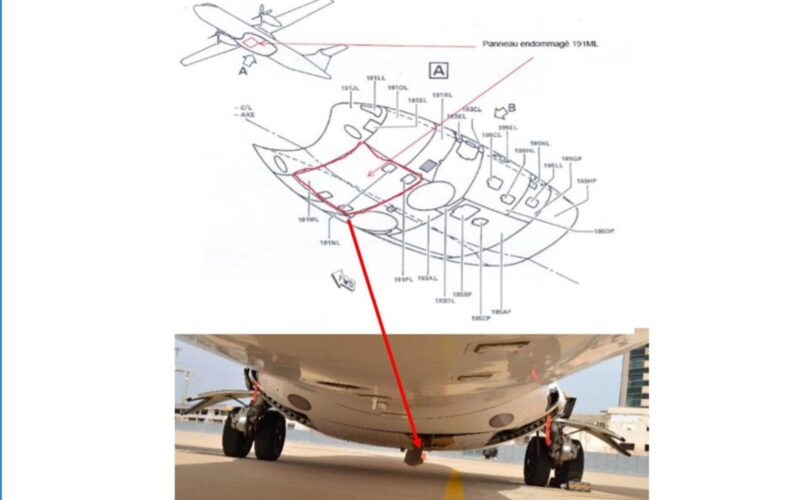Moroccan Ministry of Tourism, Air Transport, Craft & Social Economy published a report on Royal Air Maroc Express ATR 72-600 CN-COH, which suffered damage on 9 July 2018 while approaching Al Hoceima, Morocco. The aircraft struck Mediterranean sea after the crew turned off Terrain Avoidance and Warning System (TAWS) believing it to be faulty.
After the second collision with the water, the co-pilot managed to pull up the aircraft and the flight was diverted to Nador. None of the 54 passengers were injured, but the aircraft suffered heavy damage to its underside.
ATR 72 was flying from Casablanca to Al Hoceima to Tangier and was supposed to return by the same route. On the first flight to Al Hoceima, TAWS activated the TERRAIN warning while at cruise altitude, it is believed, due to the GPS anomaly.
On approach to Al Hoceima the runway was not visible, so the captain decided to arrive below the minimum descent altitude. At the distance of approximately 2 km from the runway the aircraft descended below 20 meters, while it should have been at 90.
TAWS activated for the second time with TERRAIN AHEAD PULL UP and AVOID TERRAIN messages, as the ATR dipped below 14, then climbed to 33 meters and landed as normal. Later it continued its routine flights to Tangier and back.
While approaching Al Hoceima for the second time, the co-pilot suggested to turn off the TAWS to avoid what he believed to be unwarranted warnings. Sensing that the descent rate was too rapid he also moved to select the higher altitude, but the captain remarked to “continue”.
They continued until the co-pilot observed that the situation was “not normal” and disengaged the autopilot, with the aircraft flying at just 25 meters above the water. The captain applied nose-down input, while co-pilot simultaneously applied nose-up. While they wrestled with controls, aircraft’s landing gear contacted the surface of the sea twice in quick succession.
The co-pilot was able to climb the aircraft, while the captain reported a bird strike and requested for a diversion to Nador, where the crew managed to land damaged ATR. Its fuselage underside panels were broken and strings deformed, while air inlets had salt deposits after ingesting seawater. The landing gear had to be replaced as well.
The conclusion of the report states that the incident happened due to the non-compliance with operational procedures, especially deactivation of TAWS. Safety recommendations, including enhanced training and improving reaction to TAWS alerts, were made to the airline.

